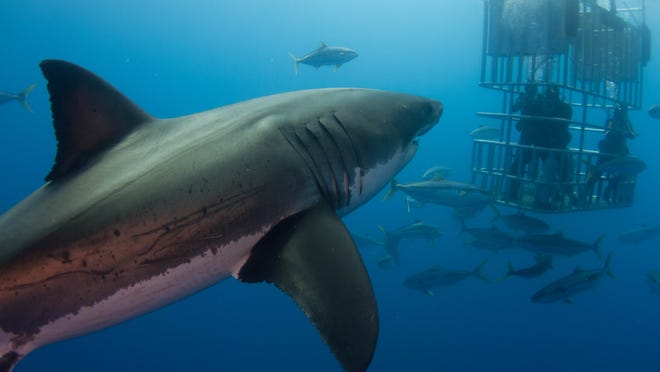The Megalodon is known as the largest and most fearsome shark to ever roam the oceans, but an apex predator around today may be the reason why the ancient beast went extinct millions of years ago, according to a new study.
Able to grow up to 60 feet long with sharp teeth as big as the palm of your hand, the megalodon was around 20 million years ago and remained at the top of the shark food chain until it went extinct roughly 3.6 million years ago, according to The Natural History Museum in London. Yet, not much is known about it.
“Megalodon has commonly been depicted as a fearsome gigantic predatory shark in novels and movies based on its large teeth preserved in the fossil record. However, the fact is that we still don’t even know exactly what it looked like,” Kenshu Shimada, professor of paleobiology at DePaul University and co-author of the study, told USA TODAY via email.
Many scientists are unsure how and what made this enormous creature go extinct, but a 2019 study raised the possibility of the evolution of the great white shark being a reason. Now, a new study published in the journal Nature Communications on Tuesday has added to the belief the infamous great white shark is a likely culprit.
It wasn’t like a battle between the star of “The Meg” versus the star of “Jaws,” given the great white shark is four times smaller than the megalodon. Rather, it was more of an eating competition that gave way for the great white shark to thrive and still be around.
Researchers came to their conclusion by analyzing the zinc isotope ratios in shark teeth, the first time ever done so, including the megalodon teeth as well as modern and fossilized great white shark teeth.
Using this method, it allowed researchers to look at the tooth’s enamel and give an idea of what kind of animals the shark fed on. It can’t reveal what exactly the sharks ate, but rather paint a picture of what the food chain of the sea was like.
“We discovered that the preserved zinc isotope composition in teeth of a variety of sharks tells us the position of each examined species in the food chain relative to the positions of other species in the ecosystem. This is because the zinc isotope composition of sharks that primarily feed on fish is different from that of sharks that primarily feed on marine mammals,” Shimada said.
A friendship over food:Great white sharks study dives into why the predators make friends
Shark tale:A great white shark is cruising the Atlantic Ocean from New Jersey to the Carolinas
This process would have shown if the great white shark was below the megalodon on the food chain, and while it proved the megalodon did feast on animals high on the chain, it also showed was the two species had overlap in trophic levels, meaning they were on the same playing field.
“If these trophic dynamics are accurate, then there is a possibility for the competition of dietary resources between these two shark lineages,” the study reads.
The study notes it is not a conclusive reason as to why megalodons went extinct, with Shimada noting “a combination of multiple factors” could have influenced its extinction, such as climate change and decline in food sources. But, the great white shark can’t be ruled out as a suspect.
“Exactly how the great white shark could have prevailed over Megalodon would be a new line of future research, but it could be that the much smaller body size might have given the great white shark the agility to outcompete Megalodon,” Shimada said.
Follow Jordan Mendoza on Twitter: @jordan_mendoza5.


